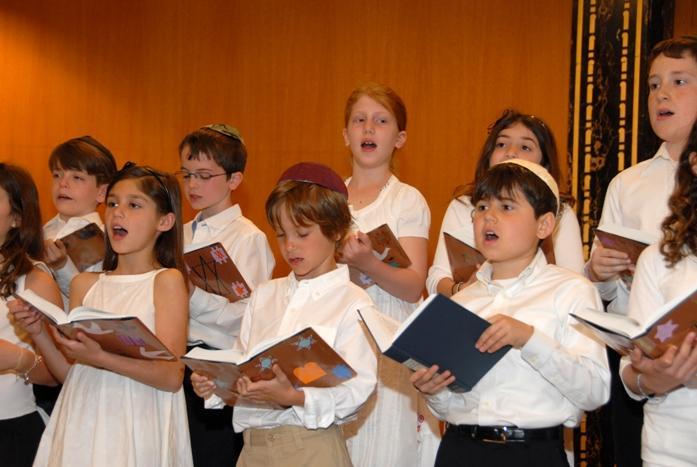The lines separating private and public, nonsectarian and religious K-12 education are blurring, presenting both a challenge and an opportunity for legislators and policymakers.
States are regularly passing voucher programs, tax credits, and charter school laws that in some cases work to “privatize” public education while making private and religious schools more “public.”
A voucher, of course, allows parents to choose a religious or private school, and the charter school policy helps religious groups open schools with Muslim, Jewish, Catholic, or Protestant identities. The U.S. Supreme Court has said voucher programs are perfectly constitutional.
Next Step: Religious Charters?
Lately, however, for state lawmakers, a new practical and legal question has arisen: Should religious groups be given full state funding for charter schools embodying their beliefs and values?
Already Florida has four predominantly Jewish charters affiliated with the Ben Gamla organization; Minnesota has the Tarek ibn Ziyad Academy (TiZA), affiliated with several Muslim groups; and Archbishop Donald Wuerl has converted eight failing Catholic parish schools into charter schools in Washington, DC. Similarly, the Greek Orthodox community in Brooklyn, New York, formed the Hellenic Classical Charter School on the site of a former Greek Orthodox school.
These charter schools often teach the language of the religious group (e.g., modern Hebrew, Greek, or Arabic). TiZA actually stops its classes at noon for prayers. The question for state and federal legislators, then, is: Do children and society benefit from the mingling of public support and dollars with private and religious values, languages, and practices?
Charter schools under religious banners are perhaps the best of both worlds. Public support can mean more help for all children and schools, based on individual need and public goals. And private-religious education can build stronger values, answer human concerns, and foster spiritual development.
Blurring the Lines
We could argue for cultivating a new “middle ground” in education. In Blurring the Lines, a new book I coauthored with Janet Mulvey and Arthur Maloney, we describe an emerging “golden mean” in which it may be possible—if done properly—for state and federal funds to support schools founded on private and religious beliefs.
This convergence is not really new. We could cite, for example, major changes in federal policy under Lyndon Johnson, who turned to Catholics to help pass the Elementary and Secondary Education Act (ESEA) of 1965.
In 2002 the ESEA evolved into No Child Left Behind, which allots public school teachers and resources to religious schools as a way of helping children in poverty. Congress also passed the Rehabilitation Act of 1973, which provides significant funding to children attending private schools and classified with special needs or disabilities.
Decades of Precedents
In fact, precedent extends much further back, to the “legalization” of private religious schools in 1925, in a landmark Supreme Court case originating in Oregon. Gov. Walter Pierce (D) attempted to make public education compulsory through a successful state constitutional amendment, essentially outlawing private and religious schools.
The Catholic Society of Sisters of the Holy Names of Jesus and Mary joined with the Hill Military Academy in Portland to sue the state. They won in the landmark Pierce v. Society of Sisters (1925)—establishing a modern Magna Carta for private and religious education in the United States that remains in force to this day.
The U.S. Supreme Court’s ruling in Zelman v. Simmons-Harris (2002) affirmed the legality in Cleveland, Ohio, of giving public, tax-based vouchers to families who could in turn “cash in” their vouchers in a private or religious school of choice without violating the “separation of church and state.” Zelman thus affirmed the spirit and letter of the Pierce decision.
We can thus clearly see how history, legal precedent, and public policy support a truly public education system in which American children can learn values, skills, personal responsibility, and civic duty. Private and religious schooling adds beliefs, hopes, and meaningful community concern, which together offer societal coherence, teach life skills, and reinforce common values.
Toward a ‘Golden Mean’
In an era of No Child Left Behind and, now, Race to the Top and emerging Common Core State Standards, state lawmakers are called upon to help ensure quality and more equitable support for pre-K, elementary, and secondary schooling. That should naturally lead lawmakers to craft policies encouraging innovation, more charter schools, vouchers for families to select the school of their choice (public, private, or religious), and generally more equitable state
funding for all.
Lawmakers should not view private or religious schooling as competitors but instead as complementary to the traditional public responsibility in education—moving toward a new balance, a “golden mean.” Healthy competition can make for better schools and a stronger society. Skills matter, but so do values.
A “golden mean” should mean the best of both worlds, not two educational worlds in conflict, as has been the case during recent decades. The United States has a long and noble tradition of endeavoring to educate every child at the highest possible level, regardless of race, color, ethnicity, creed, or geographic location. At the same time, Americans have always been and remain a deeply religious people, with 65 percent professing a belief in God, the highest in the modern world.
We’ve done a better job in recent years of letting religious groups exercise their educational rights and responsibilities. Perhaps as education reform enters its next phase, the motto should be: “In God we trust!”
Bruce S. Cooper Ph.D. ([email protected]) is professor of school leadership and policy in the Graduate School of Education at Fordham University. His books include The Handbook of Education Politics and Policy (Routledge) and Blurring the Lines: The Rise of Religious Charter Schools (Information Age Publishing, forthcoming) with Janet Mulvey & Arthur Maloney.




